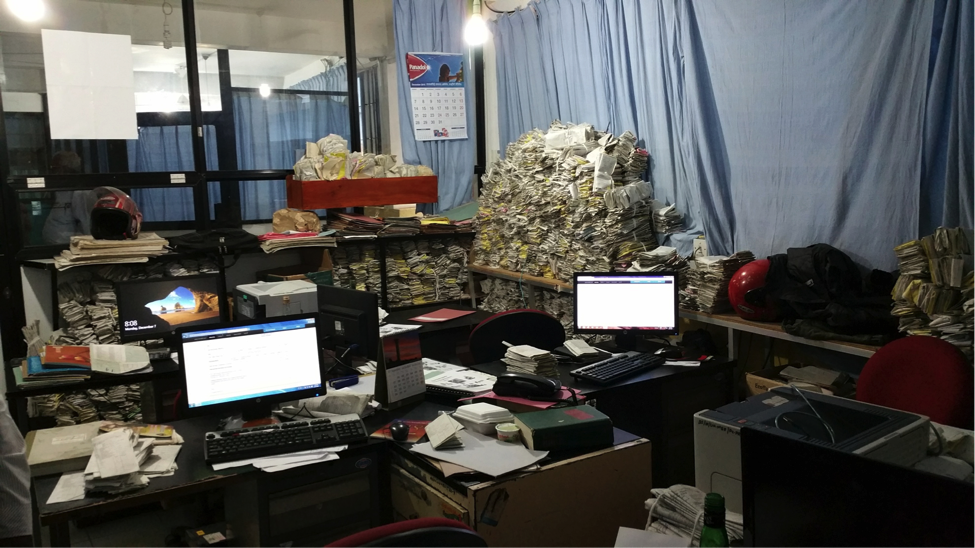Tools and Approaches for Avoiding Data Graveyards
Every day, government, civil society, and development agency officials make decisions about where to implement new projects, or how to allocate resources. But how do these individuals make these decisions – what data do they use (or need), and are existing data fit-for-purpose?
This Monday, we are looking forward to co-hosting a DC launch event with our partners at the AidData Center for Development Policy (ACDP), and with the support of USAID’s Global Development Lab. The “Avoiding Data Graveyards” report draws on the experience and opinions of nearly 200 interviewees across government, development agencies, and civil society.
We’ve written recently about country-specific findings in Senegal, Honduras, and Timor-Leste, and how these studies contributed to new programming and changes in government behavior. At DG, we view this report as another key pillar of our applied research efforts, as we seek to understand if, how, and when data and evidence influence policies and programs. This post explores several of the report’s key findings that echo what we’ve learned elsewhere in our Results Data Initiative (RDI), IATI-AIMS integration work, and beyond.
Working with the Grain of Government (Principles 7 and 8)
We frequently see data for development efforts featuring external organizations that bring “solutions” or “evidence” to government, only to be frustrated by tepid uptake. Governments are complex systems, with high white blood cell counts that often rebuke “foreign bodies” – ideas, data, evidence that come from the outside. Recognizing this requires a different approach to building data uptake: working with governments from the inside. In our work in Tanzania through RDI, we are taking a new approach: working through a government steering committee, and closely with government technical staff, to use existing government data more effectively, to address government priorities. We believe that this approach of “working with the grain” is far more likely to result in evidence-based policies, as well as deeper learning on how governments decide on policies and program design.
The need for local level outcome data (Principle 1)
Through RDI, we’ve frequently heard the same refrain from district- and local-level government staff: funders (and central governments) require local collection of data on outputs (number of farmers trained, patients seen), but local decision-makers need disaggregated information on outcomes (farmer income, maternal mortality). When disaggregated data on outcomes is available, local decision-makers can be more empowered to make better decisions. We saw this very clearly in Ghana, where the use of disaggregated data on maternal mortality led to significant improvements, saving women’s lives.
Data funders should nudge producers toward integration and interoperability (Principle 3)
There has been strong growth in global data standards for aid information, procurement data, extractives data, and so on. These standards have potential for greater use at country level, by encouraging interoperability and facilitating integration of data systems. Funders have a key role in pushing for the data their implementers collect align with global standards – where they exist – and that data are interoperable with key government definitions (e.g., identifiers for facilities, districts, sectors). Ensuring that all data are open, accessible, and machine readable is also critical to facilitate data use and avoid the all-too-common data nightmare pictured below.

Systematic review of training methods (Principle 6)
Capacity building has been at the heart of Development Gateway’s Aid Management Program since its inception a decade ago. Our own anecdotal experience has shown that tailoring training programs to reflect every-day work scenarios of trainees improves how quickly users are able to understand the tool itself. But until now we have never assessed if and how training can increase the usage of data.
In 2016, DG, together with the ACDP and supported by USAID, implemented training treatments in Honduras and Timor-Leste as part of a randomized control trial which seeks to understand how to increase data use. Training programs were focused on using AMP data in scenario-based analyses and hands-on data work. The efficacy of these trainings are currently being formally evaluated by colleagues at The University of Texas at Austin and the College of William & Mary. Based on preliminary positive results, DG will be working in a number of other countries this year to improve geocoded aid data usage in a variety of government processes, including the project appraisal, disaster risk planning, and municipal project monitoring.
“Avoiding Data Graveyards”, like other applied research efforts at DG, is catalyzing new tools for, and approaches to, our work. As we listen to local decision-makers and intended data users, we can become more effective in serving their needs, and in incentivizing and empowering data-driven development.
Share This Post
Related from our library

Beyond Kigali: Where Does Africa Go from Here with AI?
As governments, funders, entrepreneurs, and technology leaders rally around the AI moment and move towards actions, at Development Gateway, we are asking a different set of questions: Where is the data, and what is the quality of the data behind the algorithms? How will legacy government systems feed AI tools with fresh and usable data? Are Government ministries resourced to govern and trust the AI tools that they are being encouraged to adopt?

How useful is AI for development? Three things we learned from conversations with development experts
The development world is buzzing with excitement over the idea that new and emerging applications of artificial intelligence (AI) can supercharge economic growth, accelerate climate change mitigation, improve healthcare in rural areas, reduce inequalities, and more. But what does this look like in real life?

Stakeholder, Where Art Thou?: Three Insights on Using Governance Structures to Foster Stakeholder Engagement
Through our Tobacco Control Data Initiative (TCDI) program and its sister program Data on Youth and Tobacco in Africa (DaYTA), we have learned that creating governance structures, such as advisory boards or steering committees, is one approach to ensuring that digital solutions appropriately meet stakeholders’ needs and foster future stakeholder engagement. In this blog, we explore three insights on how governance structures can advance buy-in with individual stakeholders while connecting them to one another.